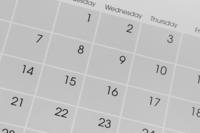It's a common question: How in the heck is Basic Allowance for Housing (BAH) calculated? The question is particularly frequent as we wait for the new year's BAH rates to be announced in mid-December.
On the surface, BAH rates often seem to make no sense. But in fact, they are very carefully researched and based upon facts and formulas. There are three main things to understand: what BAH is designed to cover, how the cost information is collected, and how the collected information factors into the rates that fulfill the design of the allowance.
1. What BAH Is Designed to Cover
BAH is designed to cover a portion of a service member's housing costs, including both rent and utilities in the area. It does not consider mortgage payments or family size. It is based upon a table of how much housing is required by a typical service member of a particular paygrade. Each paygrade is designated an amount that corresponds to a specific size housing unit, or a percentage between two housing sizes.
For example:
- An E-6 with dependents receives the rate for a three-bedroom townhouse, as does an O-5 without dependents.
- An E-4 without dependents receives the rate for a one-bedroom apartment.
- An E-1 with dependents receives the rate for the midpoint between the cost of a two-bedroom apartment and a two-bedroom townhouse.
- An O-3 with dependents receives the rate for a three-bedroom townhouse.
The designation of "how much house" is appropriate for each paygrade is the subject of much disagreement. You may think it is too much, too little or just right, but the important part is that these are the sizes and types of housing used to determine the rates. For more details and the formulas for each rank, see How Much House Do You Rate?
2. Collecting the Cost Information
BAH rate calculations include two parts: rental housing costs and utility costs.
Rental Housing Costs
The Department of Defense hires a contractor to survey approximately 400 rental markets each year. The contractor is looking for median rents and utilities for six different types of properties:
- One-bedroom apartment;
- Two-bedroom apartment;
- Two-bedroom townhouse;
- Three-bedroom townhouse;
- Three-bedroom single family house;
- Four-bedroom single family house.
Data is collected during the summer, when the housing market is most active. In order to make sure that it is collecting data that is representative of appropriate quality housing, the contractor looks at the average income in an area when selecting the housing to poll, and tries to select neighborhoods whose average income is roughly the same as comparable military members.
The survey excludes any housing deemed substandard, including mobile homes, efficiency apartments, furnished rentals, income-restricted housing, seasonal housing and age-restricted units.
Making Sure That the Data Is Right
In order to verify all of its rental cost data, the survey includes information about actual, available rental units, and also includes input from local real estate professionals, the installation housing office and the installation leadership. Review by the housing referral office and the installation leadership helps to ensure that the data doesn't include unsafe or inappropriate neighborhoods or units.
Once the rental cost information is collected and processed, there are on-site reviews of the information collected to ensure that it is accurate.
Utility Costs
Information on utility costs is obtained by using rates from the local utility provider, consumption information from the annual American Housing Survey (AHS) performed by the Bureau of the Census, and climatic information from the National Oceanographic and Atmospheric Administration (NOAA).
Armed with these three sets of data, the DoD considers the climate and average consumption, then applies the prevailing utility rates to estimate utility costs.
3. Calculating the BAH Rates
After they've figured out median rents and average utility costs for each location, BAH rates are calculated. There are 39 different BAH rates used for each specific geographic area. That's a lot of numbers.
Once the calculated housing costs are compiled for each of the 39 levels, the amount of BAH is calculated based upon a percentage. Originally, BAH was paid at 80% of the calculated housing costs; in 2005, that amount was increased, allowing BAH to cover the full housing costs. But beginning in 2019, BAH payments were reduced to 95% of calculated housing costs.
I know it often seems like the changes in BAH rates don't make any sense, but you can see that there is a lot of research and statistical information that goes into making these rates. I can't imagine a more accurate or fair system, even if it often seems wacky.
As a note, I often hear complaints from military families that BAH for their area doesn't cover their housing costs. In nearly every case, the family is choosing to live in a house that is larger than the housing used to calculate costs.
While I understand the desire to live in a larger house, especially if you have a larger family, I think it is a little unfair to claim that rates are too low when you've made the choice to live in a larger house. Every family has the option to choose their size and type of housing. If they spend more than the amount allocated for the service member's rank, they'll have to pay out-of-pocket. If they spend less than the amount allocated for the service member's rank, they'll have money left over to use for other purposes. This puts the decision in the hands of the individual, which seems perfectly reasonable to me.
Keep Up With Military Pay Updates
Military pay benefits are constantly changing. Make sure you're up-to-date with everything you've earned. Subscribe to Military.com to receive updates on all of your military pay and benefits, delivered directly to your inbox.
Related: Basic Allowance for Housing -- BAH Personal Finance Military Pay









